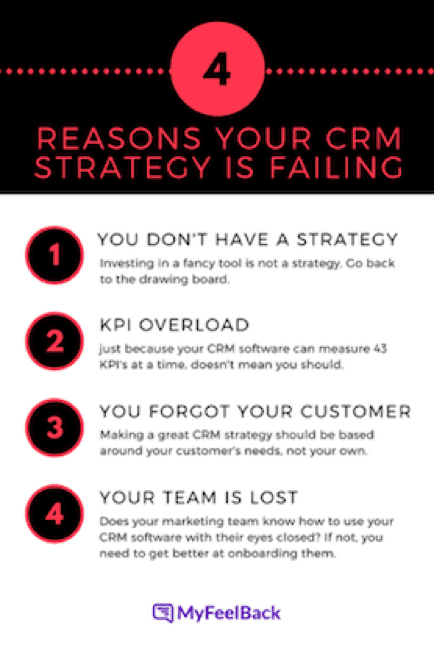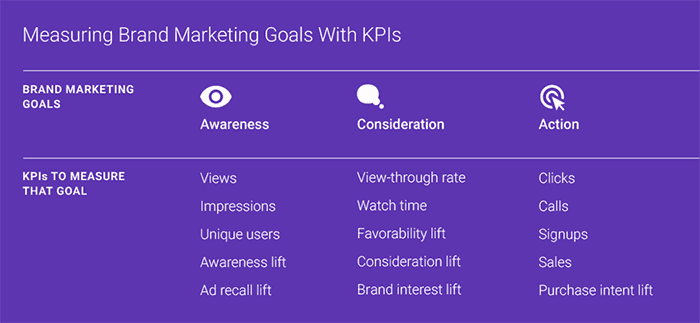If you’ve recently invested in a new CRM, and it’s not giving you the results you expected (and the results you desperately need), it can feel like the weight of the world is on your shoulders. Because you were the one who pushed investing in the system, whether it succeeds or fails is all on...

If you’ve recently invested in a new CRM, and it’s not giving you the results you expected (and the results you desperately need), it can feel like the weight of the world is on your shoulders. Because you were the one who pushed investing in the system, whether it succeeds or fails is all on you. Your c-suite is waiting to see how this CRM is going to make them money, and for right now, it feels like you just threw away a hefty monthly fee on software that’s not doing anything for you. (Not to mention the time you wasted researching all of the different options.)
Don’t panic. If your CRM isn’t performing in the way you need it to, it’s probably because you are giving too much thought to the specific CRM tool you are using and not enough thought to the CRM strategy driving that tool.
This blog post talks about why your CRM strategy if failing, and what you need to do to start getting your CRM to work for you instead of against you.
#1 Your CRM is not a magic machine
“Invest in the software, train the team, then let it do it’s magic.”
Whether we admit it or not, this is often our thinking process for our new CRM, but this is not a CRM strategy.
Even if you invested in the best CRM out there, your CRM Is nothing more than an advanced tool that can help you implement your awesome strategy. Actually, the better and more advanced your CRM is, the more complex of a strategy you are going to need, because you are going to need to have to balance the different features and choose the path that works best for you. If you haven’t sat down and created a strategy for using your CRM, then you’re just flying blind. A lot of times, our CRM strategy is failing because if we’re honest with ourselves, we realize we don’t actually have a set one in place.
If this is the case for you, check out your CRM’s site blog and see if they have some articles on developing a strategy around their brand like this one from Salesforce.
Click here to discover the integration between MyFeelBack and Salesforce!
If not, you can always research best practices, or consult a customer care representative from the brand and tell them you need some guidance about how to best use their software. You’re not alone!
#2 You chose too many KPIs
Measuring key performance indicators is a great and necessary aspect of any CRM strategy, and our CRM allows us to do this with relative ease, which is exciting. However, trying to bite off too much and measure too many KPI’s at once is actually counterproductive and can hurt your CRM strategy.
The best way to approach KPIs is to divide and conquer. Pick a few related KPIs, like customer retention rate (churn), and Lifetime Value, and then focus on building those up. Once your current customers are loving your company and everything is great, then you can move on and tackle separate KPIs, like customer acquisition. Trying to measure too many things at once actually prevents you from seeing cause and effect and understanding what’s happening, it also overwhelms your marketing department.

#3 You CRM strategy is not customer-centric
Who created your CRM strategy? Was it you? Your marketing team? Or was it your customers?
Our customers shape almost every aspect of our marketing, and CRM strategy is no exception. Quite simply, you need to make your CRM strategy customer oriented or else it will not be successful. Your customers’ pain points should guide your marketing content. Your customers’ online behavior should determine the KPI’s you measure. Everything about your strategy should be traced back to the customer knowledge that gives purpose and direction to your choice.
Be careful: A lot of times we think we are customer centric in our strategizing but we’re not. This happens when we think we know who our customer is, but really we are marketing to our preconceived idea of a customer, not the real live people who are actually buying our product. Let go of any preconceived notions that you have about your customers, do the customer research that you need to do in order to understand your customer’s motivations and needs, and then cater your CRM strategy around this. It takes some extra work, but there really is no other way.
#4 You did not effectively onboard your staff
Just like we need to remember that our customers are real life people, we need to remember that our employees are as well. Implementing a new CRM is overwhelming for everyone, including your marketing team. If your CRM strategy isn’t working like you expected, it may be because the people using the CRM software are confused or not properly trained.
Your CRM is sort of like the unifying tool of your marketing team. Every single person on your team should be able to operate it with their eyes closed, and be completely comfortable with all of its features. Again, this requires an investment of your time, but there really is no other way. Coming into work everyday and trying to use a tool that confuses and frustrates you is a sure fire way to decrease productivity and lower company morale.
Most CRM softwares have free training and are available 24/7 with questions. Companies like Salesforce are moving onboarding to the cloud to make it faster and more accessible. Take advantage of the resources and tools your CRM offers you, and teach your employees how to get in contact with them on their own so that they don’t have to pester you every time they have a question.
CRM’s are a great marketing tool and they are only getting better, but this means that you have to be even more invested in your strategy than ever before. Remember, you’re not alone, there are resources out there to help you get your strategy under control. Real progress takes time and commitment, and the results will be there if you stick with it and listen to your customer.








